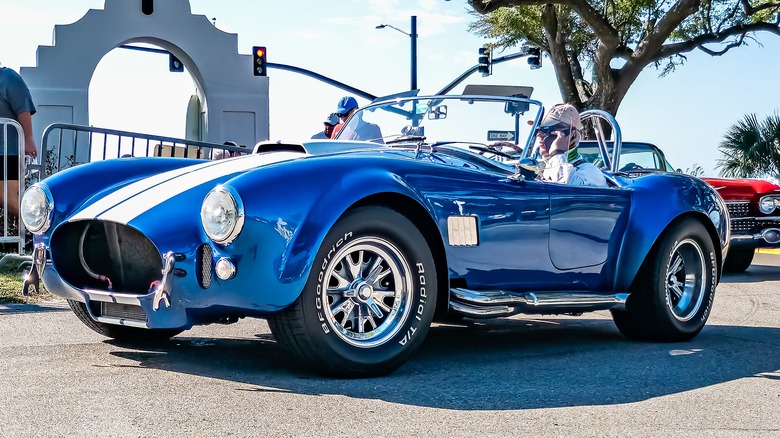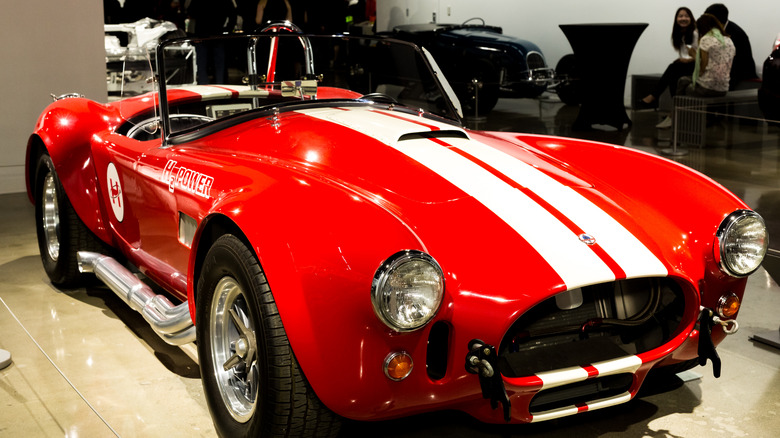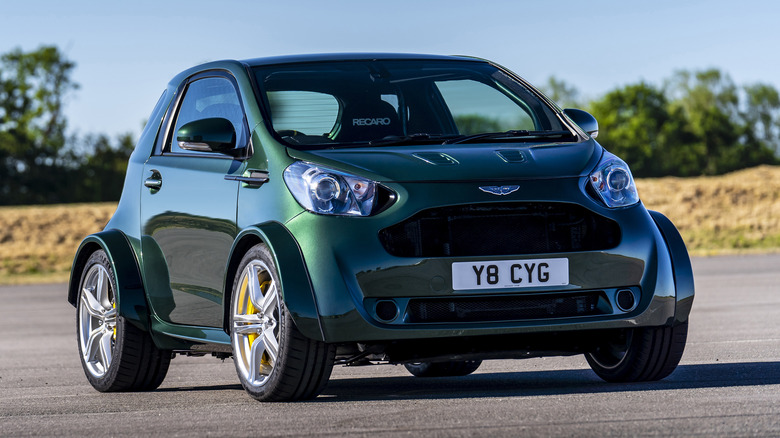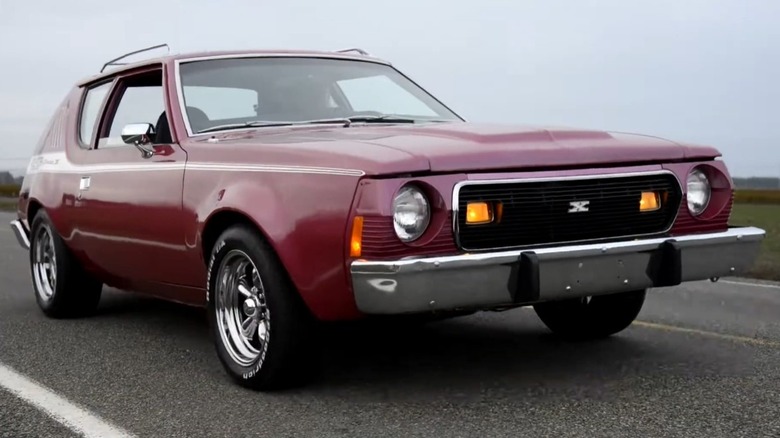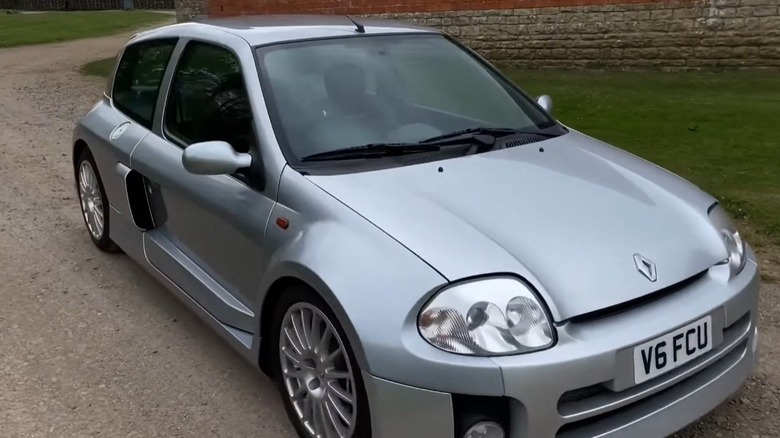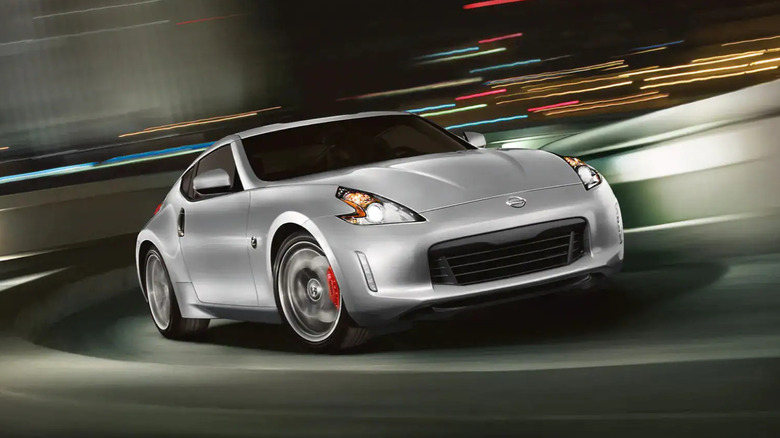5 Small Cars Powered By Huge Engines
If you wanted to purchase and drive a car with exceptional motor muscle, what exactly would you expect it to look like? Probably a massive monster of a vehicle, piercing the highway like a missile, right? Sure, there are plenty of huge cars out there with equally huge engines. Something that could be considered a little more impressive, though, is a compact day-tripper of a vehicle with a hidden humdinger of an engine under the hood.
In the last few decades, thanks to advancements in engine optimization and design, it's become much more possible to pack horsepower in the hundreds into a relatively compact engine. These secret six-pack engines have found their ways into all kinds of vehicles, even ones small enough to fit in on the neighborhood driveway. It's quite possible to have a car that can fit comfortably into a residential garage, but can also do 0-60 mph on the highway in five seconds.
The 1967 Shelby Cobra 427 is all muscle
Part of what makes a snake an intimidating predator is its remarkable mobility despite its size and lack of limbs. They're like little bundles of pure muscle, striking with calculated speed and precision. In the 1960s, Shelby took a page out of nature's notebook to create a compact vehicle in the slithering hunter's image: the Cobra 427.
At a casual glance, this car looks like a little dune buggy, albeit with a lower-riding body. It doesn't look that impressive from the front, but under the hood, much like a snake, this bad boy is all muscle. The original Cobra 427 featured a positively terrifying 7-liter big-block engine with a face-melting 410 horsepower. If you really opened this thing up on the straightaway, you could get up to 100 mph in about eight seconds and change. There's a reason these things have become highly sought-after collector's items, although Shelby still makes modern Cobra models to this day. The modern Cobras have only gotten beefier, with engine strengths ranging from 500 to 750 horsepower.
The Aston Martin Cygnet V8 has got a big heart (and wheels)
Typically, the reason you drive a one-seater vehicle is because you don't drive around that much and have no particular need for muscles. But what if you wanted the sensible automotive real estate of a microcar, but enough muscle under the hood to outrace anyone who looks at you funny? That's an oddly specific request, but apparently it was one that Aston Martin was all too eager to grant with the creation of the Cygnet V8.
Originally debuting in 2018, the Aston Martin Cygnet V8 is self-billed as "the ultimate city car." It's positively tiny, only just big enough to fit a driver and passenger with a little bit of trunk space in the back. Under the hood, though, beats the heart of a giant. As the name may have tipped you off, this car packs a 430 horsepower 4.7-liter V8 engine cannibalized from one of Aston Martin's previous vehicles at the time, the V8 Vantage S. The compact size means the Cygnet V8 is only around 3,000 pounds soaking wet, so combine that with the engine, and you get a vehicle that can zip along the road at remarkable speeds.
The AMC Gremlin 401-XR is a beast
AMC's Gremlin series has a bit of a reputation for being funny-looking, with its sloped fronts and hunchbacked rears. Despite the longtime derision, though, the Gremlins were actually pretty decent cars, not just for day-to-day driving, but their surprising efficacy in cramming hefty amounts of muscle into compact packages. Case in point, the 1974 AMC Gremlin 401-XR looked roughly the same as its siblings, but had the ferocity of its namesake beastie growling under the hood.
The Gremlin 401-XR packed a 6.6-liter V8 engine within its bowels, giving it both the feel and performance of a classic muscle car. Its raw output was only around 255 horsepower, a bit lower than some of its contemporaries, but with that came a fearsome 345 lb-ft of torque. It took a little longer to get up to speed than some other muscle cars, but once it got up there, nothing short of a solid wall could even hope to stop it. Slow and steady wins the race, as they like to say, though perhaps "slow, steady, then barreling" would be more accurate in this case.
The Renault Clio V6 is deceptively feisty
Here's a hypothetical: you jump into a modestly-sized subcompact hatchback car and put your foot on the pedal. In most cases, you'll get some decent acceleration, more than enough to get you where you need to go, but not much more than that. In the 2003 Renault Clio V6, though, this simple scenario is actually a trap. As soon as you put your foot down in this vehicle, you will realize you've just entered the maw of a little monster.
Despite having the body and styling of a humble subcompact, the Phase 2 version of the Clio V6 was a hot hatchback with a mid-mounted six-cylinder 2,946 cc engine. This allowed it to go from 0-60 mph in a little over six seconds. While the engine was only a 3-liter, somewhat small by today's standards, in its heyday, the Clio V6 was far faster than anyone expected it to be. Andrew Frankel of Goodwood Road & Racing once called the Clio V6 "the scariest car I've ever driven" due to its tricky handling, showing it to be a car that may have been a little too big for its proverbial britches.
The Nissan 370Z NISMO is a highlight of Z-Cars
Sometimes, even if a car is small in stature, you can tell it's a road warrior at a quick glance. A high-performance sports car doesn't need to be gigantic, after all. One good example of this came about from Nissan's line of Z-Cars, a lineage of compact sports cars originally launched in the late 1960s. Just about all of these cars fit the bill for small rides with big dreams, but the one that really catches our eye is the 2009 Nissan 370Z NISMO.
This fierce-eyed coup is slightly longer than its base-model sibling, but still a fairly average-sized car. It was no slouch in the speed department, though. With the help of a 3.7-liter V6 engine, this thing could go from 0-60 mph in about five seconds. Thanks to an ECU reflash and dual exhaust, it got 350 horsepower at 7,400 RPM with 276 lb-ft of torque. It wasn't substantially different from the base model 370Z, but lots of little changes added up to more performance boosts in the long-haul.
